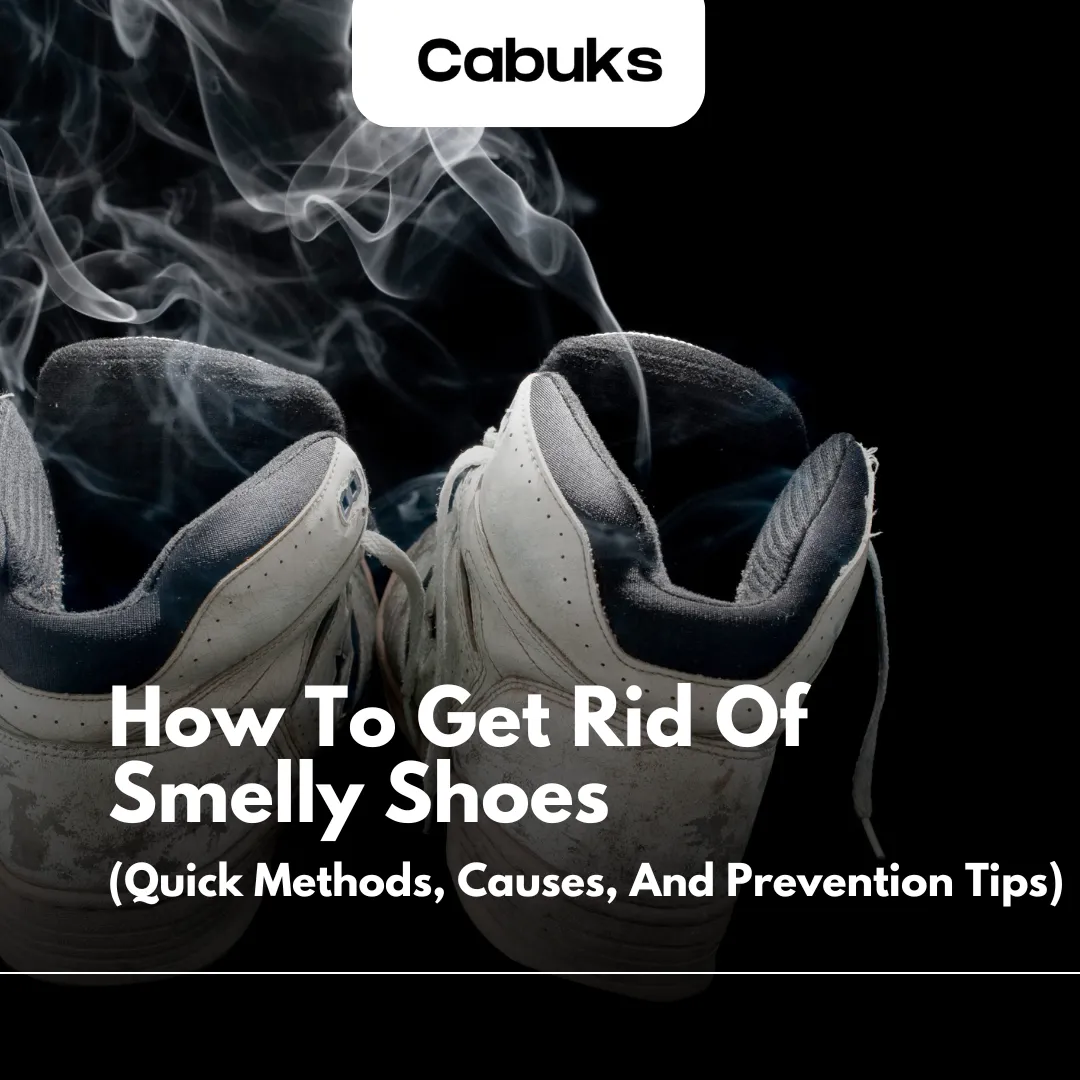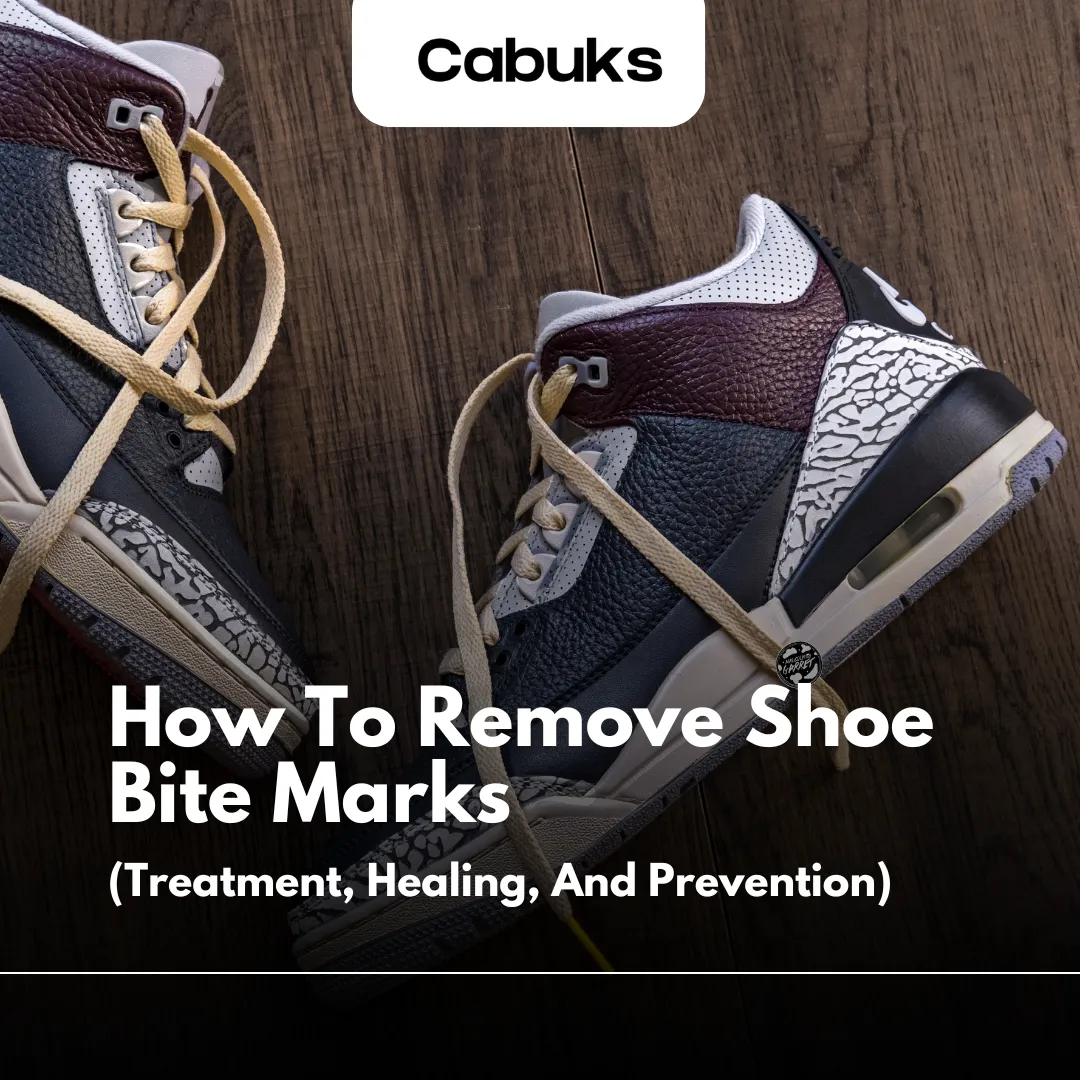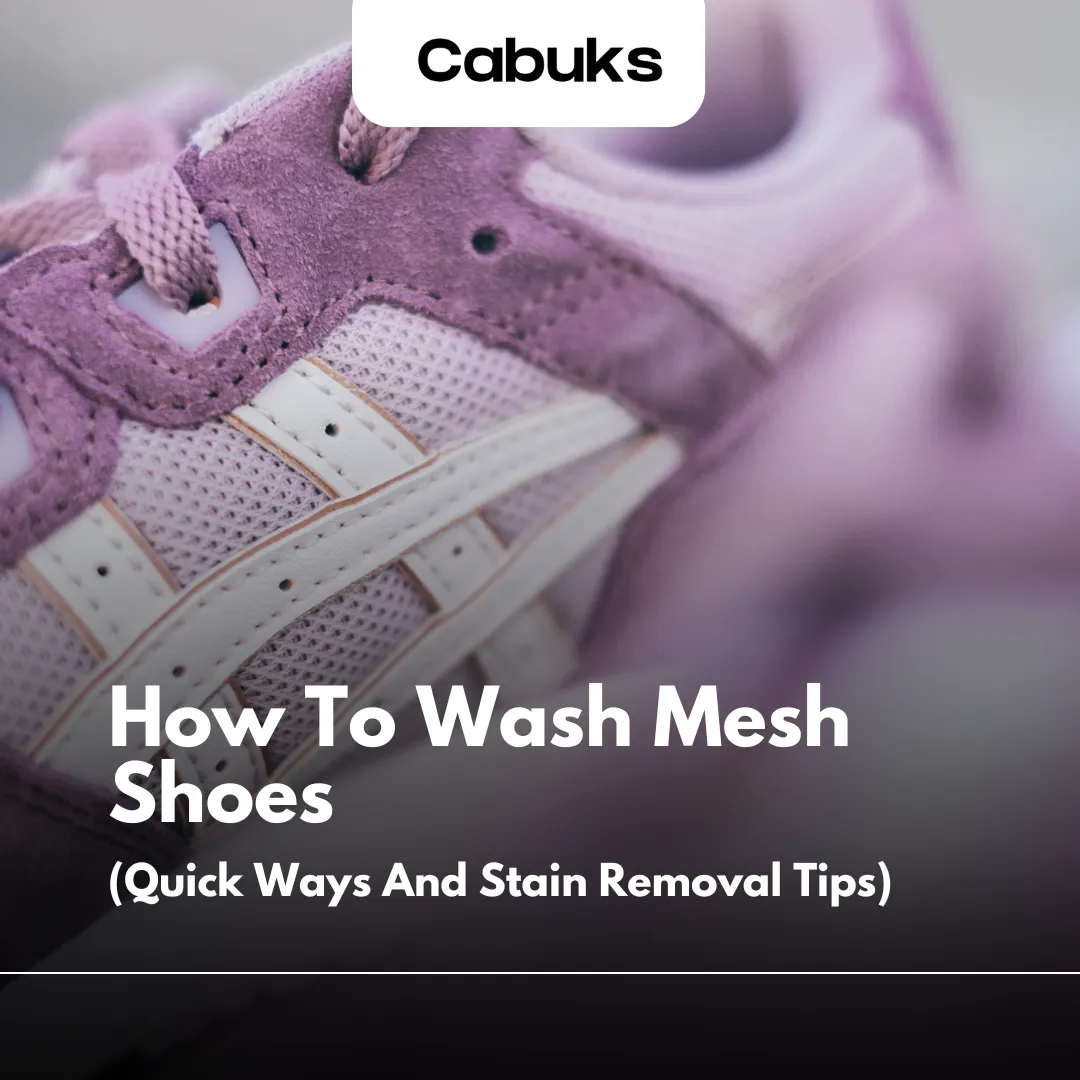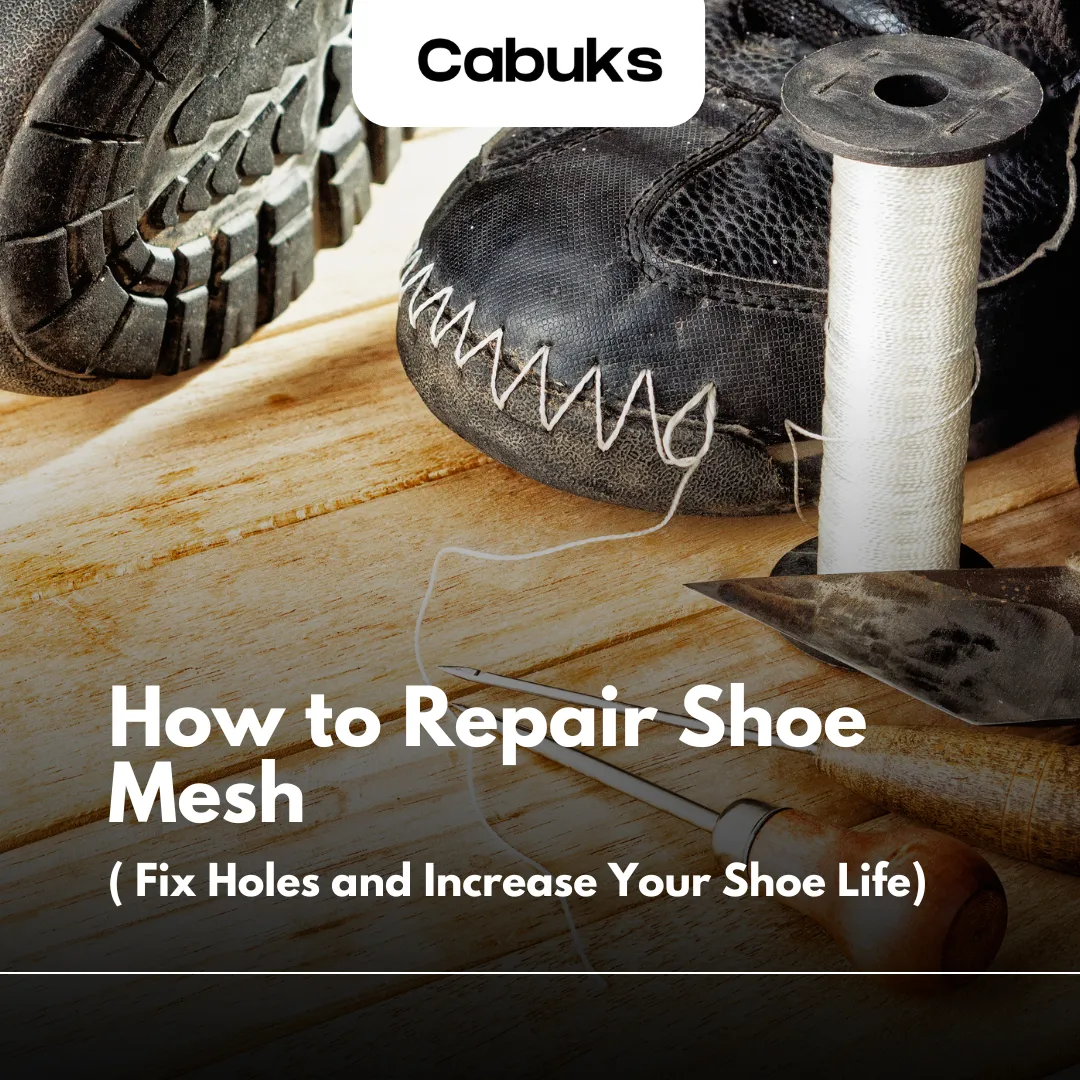Keeping your man-made leather shoes looking new and stylish is vital to their longevity and appearance.
In this guide from Cabux, we’ll explore effective ways to clean man-made leather shoes to ensure they stay in pristine condition for every occasion.
From basic cleaning to stain removal, our tips will help you keep your shoes looking brand new.
How To Clean Man-Made Leather Shoes
Cleaning manmade leather shoes is essential to maintaining their appearance and longevity. Here is a step-by-step guide for how to clean man made leather shoes:
- Gather the materials: You will need a soft cloth, mild soap, warm water, a soft-bristled brush, and a synthetic leather conditioner.
- Remove dirt: Use a soft brush or cloth to remove dirt and debris from the surface of the shoe.
- Prepare the cleaning solution: Mix a small amount of mild soap with warm water.
- Clean the shoes: Soak a cloth in the solution, wring it out and wipe the shoes, paying attention to stained areas.
- Rinse: Use a clean, damp cloth to wipe away any soap residue.
- Dry: Allow the shoes to air dry away from direct sunlight or sources of heat.
- Condition: After drying, apply a synthetic leather conditioner to keep the material supple.
The importance of using the right cleaning agents
It is important to use the right cleaning agents as harsh chemicals can damage synthetic leather.
Always choose mild soaps or special cleaners formulated for manmade materials to avoid discoloration and deterioration.
Dos and Don’ts
Do’s:
- Try any cleaning solution on a small area first.
- Use a soft brush or cloth to prevent scratches.
- Condition the material regularly to maintain its look.
Don’ts:
- Do not use abrasive materials or harsh chemicals.
- Avoid soaking the shoes, as excess water can weaken the adhesive.
- Never expose them to direct heat sources.
By following these steps, you can keep your manmade leather shoes looking great!
What Is The Best Way To Clean Man Made Leather Shoes?
When it comes to cleaning manmade leather shoes, following the proper cleaning procedure ensures that your shoes stay in good condition for as long as possible.
At Cabuk, we recommend using a combination of gentle cleaning techniques and protective measures to maintain the integrity of your shoes.
The Ideal Cleaning Process for Manmade Leather Shoes
- Remove Surface Dirt:Start by using a soft, dry cloth or shoe brush to gently remove surface dust and dirt.
- Apply the Cleaning Solution: For a deeper clean, mix a solution of mild soap and water, and apply it to the shoes using a damp cloth. Be careful not to over-wet the material, as too much water can damage manmade leather.
- Spot Cleaning: For tough stains, use a DIY solution like a leather-safe soap or a mixture of baking soda and water to gently scrub the affected area. Always test the solution on a small, hidden part of the shoe first.
- Drying: After cleaning, allow the shoes to air dry naturally. Avoid exposing them to direct sunlight or heat sources, as this can cause the material to crack.
Benefits of each cleaning method
- Commercial leather cleaners: Thoroughly clean and protect the material, especially for shoes that are worn regularly or kept in harsh conditions.
- DIY remedies: Great for spot cleaning and everyday care. Baking soda is effective at absorbing oil-based stains, while vinegar helps remove dirt and bacteria.

How To Remove Oil Stains From Man Made Leather Leather Shoes?
Removing oil stains from leather shoes can be tricky, but with the right approach, you can return them to their original state.
Here’s a step-by-step guide to effectively treating and removing oil stains from leather shoes using common household products like baking soda, cornstarch, and leather-safe soap.
Step-by-step instructions
- Blot off excess oil As soon as the stain occurs, use a clean cloth or paper towel to gently blot up the oil. Do not rub; this can spread the stain and cause the oil to deeper into the fabric.
- Apply a powdered absorbent Sprinkle a generous amount of baking soda or cornstarch directly onto the stain.
These powders work by absorbing the oil from the surface of the leather. Let it sit for at least 30 minutes, but for deeper stains, letting it sit overnight may produce better results.
- Brush the Powder Away After allowing the baking soda or cornstarch to absorb the oil, gently brush away the powder with a soft brush or cloth. You may notice the stain lighten or disappear completely.
- Clean with Leather-Safe Soap For any remaining stains, mix a small amount of leather-safe soap with warm water. Dampen a soft cloth with the soap mixture and gently wipe the stained area. Avoid soaking the fabric, as excessive moisture can damage man-made leather.
- Dry the Area Once you’ve treated the stain, use a clean, dry cloth to remove any excess moisture. Allow the shoes to air dry completely, away from direct heat sources, so the fabric doesn’t crack or warp.
Tips to Prevent Oil Stains from Setting
- Act quickly: The sooner you deal with an oil stain, the easier it will be to remove.
- Use a protective spray: Applying a protective spray specifically designed for manmade leather can help prevent the stain from setting in.
- Avoid rubbing: Rubbing a stain will make it worse. Always wipe it gently and treat it.
How To Clean Synthetic Leather Shoes And Protect Vegan Leather Handbags?
Synthetic leather shoes and vegan leather handbags are stylish, eco-friendly alternatives to real leather.
However, keeping them clean and protected requires specific methods to preserve their appearance and longevity. In this guide, we’ll learn how to clean synthetic leather shoes, techniques to protect vegan leather handbags from water and stains, and preventative care methods to extend the life of your accessories.
How to Clean Synthetic Leather Shoes
To ensure your synthetic leather shoes stay in top condition, follow these simple steps:
- Remove surface dirt: Start by using a soft cloth or dry brush to gently remove dirt, dust, and debris from the surface of the shoes. This helps prevent dirt from becoming absorbed into the material during the cleaning process.
- Create a cleaning solution: Mix mild dish soap or leather-safe soap with warm water. Avoid using harsh chemicals or bleach, as these can damage synthetic leather.
- Wipe the shoes: Dampen a clean cloth in the soapy solution and gently wipe the entire surface of the shoes. Focus on removing any stains or scratches. For stubborn stains, use a soft-bristled brush and gently scrub the affected area.
- Dry the shoes properly: After cleaning, wipe the shoes with a dry, soft cloth to remove excess moisture. Allow the shoes to air dry completely before wearing them. Avoid using direct sunlight or heat sources, as this can cause the synthetic leather to crack or warp.
Protecting Vegan Leather Handbags from Water and Stains
Vegan leather handbags, while durable, can be susceptible to stains and water damage. Use these techniques to protect your bag:
- Apply a waterproof spray: One of the most effective ways to protect your handbag from water damage is to use a waterproof spray designed for vegan leather. Be sure to try the spray on a small, inconspicuous area first to ensure it doesn’t change the color or texture of the fabric.
- Use stain repellant: Stains can ruin the look of your handbag. Apply a stain-repellent spray to create a barrier to protect against dirt and grime. This can also make the bag easier to clean in the future.
- Avoid overloading your bag: Constantly overloading your vegan leather handbag can cause the material to stretch and wear unnecessarily. Keep the weight of the items inside within reasonable limits to maintain the shape and structure of the handbag.
Preventive care for synthetic leather shoes and vegan leather handbags
To extend the life of your accessories, follow these preventive care tips:
- Store properly: Always store your synthetic leather shoes and handbags in a cool, dry place. Use a dust bag or soft cotton pillowcase to cover the handbag, and avoid storing the shoes and bags in places exposed to direct sunlight or excessive heat.
- Regular cleaning: Wiping your shoes and handbags regularly with a damp cloth keeps them looking fresh.
By following these cleaning and protection methods, you can keep your synthetic leather shoes and vegan leather handbags in good condition for years to come.
Can You Machine Wash Man Made Leather Shoes?
No, man-made leather shoes should not be machine-washed. Hard water and tumbling action can damage the material. Instead, use a gentle cleaning method like wiping them with a damp cloth and using leather-safe soap to maintain their look and durability.
Pros and Cons of Machine Washing vs. Hand Washing
Pros of machine washing:
- Convenience: Machine washing is faster and easier, especially for people with busy schedules.
- Deep cleaning: In some cases, machines can clean dirt and stains more thoroughly than hand washing.
- Hands-free: You don’t have to spend time scrubbing or cleaning the shoes by hand.
Cons of machine washing:
- Risk of damage: Agitation from the machine can damage synthetic leather, causing cracks, tears, or discoloration.
- Shape distortion: Shoes can lose their shape if washed at high speeds or without proper padding.
- Peeling: Synthetic leather can peel over time from prolonged exposure to water and heat.
Pros of hand washing:
- Safe: Hand washing is much gentler on the fabric, reducing the risk of damage.
- Targeted cleaning: You can have better control over how and where you clean the shoes.
- Retains shape: Since hand washing requires less force, shoes are less likely to lose their original shape.
Cons of hand washing:
- Time-consuming: Hand washing takes more effort and time than machine washing.
- Less thorough: Hand washing may not remove deep stains as effectively as machine washing.
Safety Tips for Machine Washing Man-Made Leather Shoes
If you choose to machine clean your man made leather shoes, follow these safety tips to minimize damage:
- Use the gentle cycle: Always select the gentlest cycle your machine offers, preferably using cold water to avoid heat damage.
- Remove laces and inserts: Remove laces and any insoles before washing. These can be cleaned separately.
- Air dry only: Never use a dryer. Always air-dry your man-made leather shoes to prevent warping or damage.
By following these guidelines from Cabuks, you can ensure that your man-made leather shoes stay clean without the risk of causing any significant damage.
How To Clean White Leather Shoes And Remove Stains?
Cleaning white leather shoes can be a daunting task, especially when trying to avoid discoloration and maintain their fresh look.
Here’s a step-by-step guide on how to clean white leather shoes effectively, with a focus on preventing stains and keeping them looking brand new.
Step-by-Step Guide how to Clean White Leather Shoes:
- Remove Surface Dirt:
- Start by gently wiping the shoes with a soft cloth to remove any loose dirt or dust.
- Use a shoe brush for more stubborn areas, ensuring not to scratch the leather.
- Prepare a Cleaning Solution:
- Mix a few drops of mild soap or leather-safe cleaner with lukewarm water.
- Dampen a clean cloth with the solution, but ensure it’s not soaking wet to avoid water stains.
- Clean the Leather:
- Gently wipe the leather surfaces with the damp cloth, focusing on any visible stains.
- Avoid using harsh chemicals as they can damage or discolor the leather.
- Tackle Tough Stains:
- For scuff marks, use a small amount of baking soda or a magic eraser. Rub gently to avoid damaging the leather.
- If you encounter dirt stains, apply a bit of white vinegar mixed with water. Dab, don’t rub, to avoid spreading the stain.
- Dry Properly:
- Let the shoes air dry naturally. Do not place them in direct sunlight, as it may cause the white leather to yellow.
- Polish and Protect:
- Once the shoes are dry, apply a leather conditioner to keep the leather soft and protected.
- Use a waterproof spray to add a protective layer against future stains.
Challenges of Cleaning White Leather Surfaces:
- Discoloration Risk: White leather shoes can easily become yellowed or stained if not cleaned properly or exposed to direct sunlight.
- Visible Dirt: White surfaces show dirt and scuff marks more easily than darker shoes, making regular cleaning a must.
- Leather Sensitivity: White leather can be more delicate, requiring gentle cleaning products that won’t damage or alter its appearance.
Solutions for Common Stains:
- Dirt: As mentioned, a solution of water and mild soap works best for removing dirt from white leather shoes. For stubborn dirt, try a bit of white vinegar.
- Scuff Marks: Gently rub with a magic eraser or baking soda, but make sure not to overdo it to avoid damaging the leather surface.
How To Remove Shine From Fake Leather Shoes For A Matte Finish?
Removing the shine from fake leather shoes can give them a more natural matte finish. Here’s a simple step-by-step guide from Cabux to help you achieve this look effectively.
Step-by-step process for reducing excessive shine
- Gather your materials:
- Vinegar or mild alcohol (such as rubbing alcohol)
- A soft cloth or sponge
- Water (optional)
- Bowl (for mixing if necessary)
- Prepare the cleaning solution:
- Mix equal parts vinegar or mild alcohol with water in a bowl. If you prefer a stronger solution, you can use vinegar or alcohol undiluted.
- Test a small area:
- Before applying the solution to the entire shoe, try it on a small, inconspicuous area to make sure it doesn’t damage the material.
- Apply the solution:
- Dip your soft cloth or sponge into the solution. Squeeze it out to avoid excess moisture.
- Gently rub the shiny areas of the shoe in a circular motion. Avoid pressing too hard to avoid damaging the surface.
- Wipe:
- After buffing the shine, take a clean, dry cloth to wipe away any residue from the cleaning solution.
- Let dry:
- Let your shoes dry completely in a well-ventilated area.
When and why to remove shine from fake leather
You may want to remove the shine from your fake leather shoes for several reasons:
- Aesthetic preference: A matte finish can look more refined and natural, especially for certain styles.
- Over-shine: Sometimes, shoes can become overly shiny due to wear, making them look less attractive.
- Maintenance: Reducing the shine can help hide scuff marks or imperfections that may appear on the shiny surface.

What Are The Best Products To Use When Cleaning Man Made Leather Shoes?
To ensure that your leather shoes stay in top condition, it is essential to use the right cleaning products. Here is a list of the best products recommended for effective cleaning of your shoes:
- Mild soap: Use a mild soap like dish soap or castile soap mixed with water. It is effective for removing light dirt and scratches without damaging the material.
- Microfiber cloth: A soft microfiber cloth is ideal for applying the soap and water solution and drying your shoes without scratching the surface.
- Baking soda: For stubborn stains, a paste made of baking soda and water can work wonders. Apply it gently to the stained area, let it sit, and wipe away.
- Vinegar: Mix equal parts of water and white vinegar to create a natural cleaning solution that helps remove dirt and deodorize your shoes.
- Leather conditioner: After cleaning, apply a conditioner specifically designed for leather to keep the leather hydrated and prevent cracking.
- Protective sprays: Waterproofing sprays can help protect your shoes from future stains and water damage.
products to avoid:
- Harsh chemicals: Avoid bleach or ammonia-based cleaners as they can discolor and ruin the color of man-made leather.
- Oil-based products: Stay away from oils or waxes, which can clog the pores of synthetic materials and cause stains.
- Excessive water: When cleaning, be careful with the use of water, as excessive moisture can affect the integrity of the material.
Can Baking Soda Be Used To Clean Man Made Leather Shoes?
Baking soda is a versatile household product that can be effectively used to clean manmade leather shoes. Its abrasive properties are gentle enough for synthetic materials, making it a great choice for maintaining your shoes.
How Baking Soda Works to Clean Shoes
Baking soda acts as a mild abrasive and a natural deodorant. When mixed with water, it forms a paste that can remove dirt, stains, and odors from the surface of your shoes.
The alkaline nature of baking soda helps break down acidic substances, such as sweat and oil, that may accumulate on your shoes.
Specific Scenarios Where Baking Soda Can Be Particularly Effective
- Removing scuff marks: If your manmade leather shoes have scuff marks, applying a baking soda paste can help remove these marks without damaging the surface.
- Eliminating odors: Baking soda is known for its odor-neutralizing properties. If your shoes smell unpleasant, sprinkling baking soda inside and letting it sit overnight can effectively absorb the odor.
- Removing dirt and stains: For general dirt and stains, a paste of baking soda and water can gently scrub the affected areas, restoring the look of your shoes to their former glory.
Tips for using baking soda without scuffing the surface
- Make a paste: Mix baking soda with water to form a thick paste. This helps ensure that the baking soda is effective and reduces any potential friction.
- Use a soft cloth or brush: When applying the paste, use a soft cloth or a soft-bristled brush. This reduces the risk of scratching the surface of the shoes.
- Test on a small area first: Before applying the paste to the entire shoe, test it on a small, inconspicuous area to make sure it doesn’t cause any damage.
- Rinse thoroughly: After cleaning, be sure to wipe down with a damp cloth to prevent baking soda residue from accumulating, which can cause abrasions on the surface over time.

What Should You Not Use On Leather Shoes?
Cleaning leather shoes is important to maintain their appearance and durability. However, using the wrong cleaning products can cause irreparable damage.
Below is a guide to what you should not use on leather shoes, including a list of cleaning products that can be harmful.
Cleaning Products That Damage Leather
- Bleach: A strong chemical that can deteriorate and weaken leather fibers.
- Ammonia: Often found in glass cleaners, this can dry out leather, leading to cracks and brittleness.
- Vinegar: While useful in some cleaning scenarios, this can be too acidic for leather, causing discoloration and damage.
Why some chemicals or household products are harmful
Some chemicals are harmful because they can break down the structure of leather, whether it’s genuine or synthetic. These substances can cause the following problems:
- Color fading: Harsh chemicals can remove the leather’s protective layer, leaving the surface dull and discolored.
- Moisture loss: Many cleaning agents dry out leather, stripping it of natural oils and causing cracks.
Safe alternatives for cleaning leather shoes
For safe cleaning, consider using the following options that are effective and gentle on both genuine and synthetic leather:
- Mild soap solution: Use a mixture of warm water and a few drops of mild soap, such as dish soap or castile soap, to clean your shoes.
- Leather cleaner: Specially designed for leather, these cleaners effectively remove dirt without causing damage.
- Baking soda: A mild abrasive that can help remove stains without damaging the leather.
- Baby wipes: Unscented baby wipes can be a safe and convenient option for cleaning small stains on leather shoes.
Frequently Asked Questions About How To Clean Man Made Leather Shoes
To clean manmade leather shoes, use a soft cloth or sponge with mild soap and warm water, gently wiping the surface to remove dirt and stains.
No, machine washing manmade leather shoes is not recommended as it may damage them; instead, opt for hand cleaning methods to maintain their quality.












2 Comments
I lovge your blog.. very nice colors & theme. Did you design this website yourself or did you hire someone to do it for
you? Plz reply as I’m looking to create my own blog and wouhld like to find out where
u got this from. thanks https://Waste-Ndc.pro/community/profile/tressa79906983/
I love your blog.. very nice colors & theme. Did youu design this website
yourself or did you hire someone to do it for you?
Plz reply as I’m looking to create my own blog and would like to find out where u got this from.
thanks https://Waste-Ndc.pro/community/profile/tressa79906983/